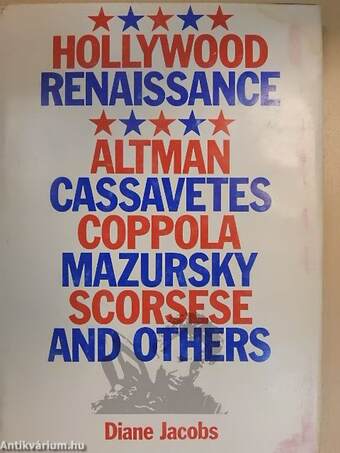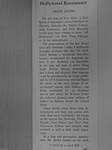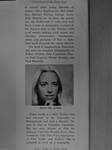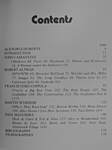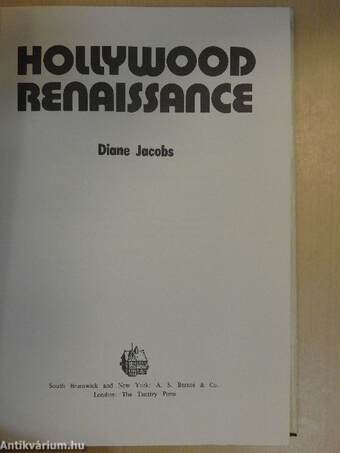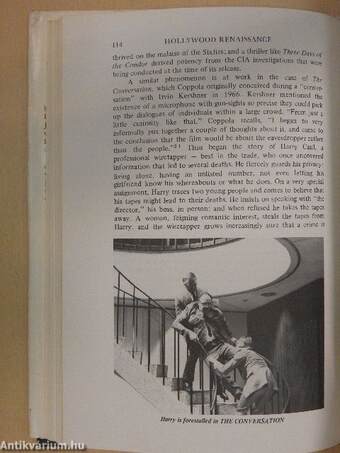1.116.650
kiadvánnyal nyújtjuk Magyarország legnagyobb antikvár könyv-kínálatát
Hollywood Renaissance
Altman, Cassavetes, Coppola, Mazursky, Scorsese and others
| Kiadó: | A. S. Barnes & Co., Inc.-The Tantivy Press |
|---|---|
| Kiadás helye: | South Brunswick-New York-London |
| Kiadás éve: | |
| Kötés típusa: | Fűzött kemény papírkötés |
| Oldalszám: | 192 oldal |
| Sorozatcím: | |
| Kötetszám: | |
| Nyelv: | Angol |
| Méret: | 25 cm x 17 cm |
| ISBN: | 0-498-01785-0 |
| Megjegyzés: | Fekete-fehér fotókkal illusztrálva. |
naponta értesítjük a beérkező friss
kiadványokról
naponta értesítjük a beérkező friss
kiadványokról
Fülszöveg
Hollywood Renaissance DIANE JACOBS On the erest of Easy Rider, a fresh brand of film-maker entered Hollywood. Hitherto, directors üke Martin Scorsese, John Cassavetes, and Paul Mazursky would have been content to shoot "offHollywood"-in New York, Chicago, or in the underground. The phenomenon of the late Sixties and early Seventies (when a brilliantly wrought, personal film üke The Godfather became a worldwide box-office smash) transformed the American cinema. A new flexibility was discernible in the type and style of movie being made. Róbert Altman demonstrated that a dense and elliptical film language could be assimilated by the larger public, and by 1975 Cassavetes, who had begun his career on the outer fringes of experimentál cinema with Shadows, was being nominated for an Academy Award and seeing his Woman Under the Influence grossing somé milüons of dollars in theatres round the United States. Diane Jacobs writes about these developments and these new talents with more than... TovábbFülszöveg
Hollywood Renaissance DIANE JACOBS On the erest of Easy Rider, a fresh brand of film-maker entered Hollywood. Hitherto, directors üke Martin Scorsese, John Cassavetes, and Paul Mazursky would have been content to shoot "offHollywood"-in New York, Chicago, or in the underground. The phenomenon of the late Sixties and early Seventies (when a brilliantly wrought, personal film üke The Godfather became a worldwide box-office smash) transformed the American cinema. A new flexibility was discernible in the type and style of movie being made. Róbert Altman demonstrated that a dense and elliptical film language could be assimilated by the larger public, and by 1975 Cassavetes, who had begun his career on the outer fringes of experimentál cinema with Shadows, was being nominated for an Academy Award and seeing his Woman Under the Influence grossing somé milüons of dollars in theatres round the United States. Diane Jacobs writes about these developments and these new talents with more than mere enthusiasm; she brings to üfe movies üke Nashville, The Rain People, Taxi Driver, and Next Stop, Greenwich Village and analyses their aesthetic as well as their social importance. In a long and provocative introduction, Ms. Jacobs touches on the work (Continued on back flap)(Continued from front flap) of several other young directors of stature-Peter Bogdanovich, Bob Rafelsőn, Michael Ritchie, George Lucas, Mike Nichols, etc. In short, she proves that the Hollywood of today may well be in a state of renaissance, a return to the halcyon days of the Thirties, with good movies making good money and allowing screenwriters, cinematographers, and producers of flair to make their mark alongside the auteur director. The book is imaginatively illustrated, and there are complete filmographies of Róbert Altman, John Cassavetes, Francis Ford Coppola, Martin Scorsese, and Paul Mazursky. About the Author Diane Jacobs is a New Yorker who was educated at the University of Pennsylvania and took a Master's Degree in film at Columbia University. She has since written on film for Changes, The Soho Weekly News, Film Comment, Take One, Viva, International Film Guide, and Gallery. She is presently at work on a screenplay. Jacket design by Stefan Dreja Vissza
Témakörök
- Idegennyelv > Idegennyelvű könyvek > Angol > Művészetek > Film
- Művészetek > Film > Filmgyártás > Filmstúdiók > Külföldi > Amerikai
- Művészetek > Film > Tanulmányok, esszék
- Művészetek > Film > Filmtörténet > Országok szerint > Külföldi > Amerikai
- Művészetek > Film > Idegen nyelv > Angol
Diane Jacobs
Diane Jacobs műveinek az Antikvarium.hu-n kapható vagy előjegyezhető listáját itt tekintheti meg: Diane Jacobs könyvek, művekMegvásárolható példányok
Nincs megvásárolható példány
A könyv összes megrendelhető példánya elfogyott. Ha kívánja, előjegyezheti a könyvet, és amint a könyv egy újabb példánya elérhető lesz, értesítjük.


